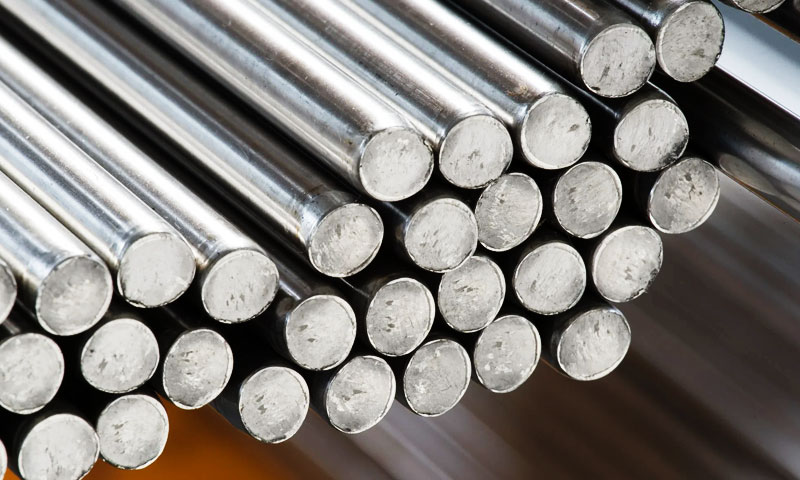1. Увођење
1.4122, commonly referenced by its European designation X39CrMo17-1, is a martensitic chromium stainless steel designed to deliver a blend of тврдоћа, wear resistance and reasonable corrosion performance.
It occupies a practical middle ground between tool steels and corrosion-resistant stainless grades: hardenable by heat treatment to high strengths and abrasion resistance, yet offering better resistance to corrosion than many carbon steels.
2. Шта је 1.4122 нерђајући челик
1.4122 (такође звани X39CrMo17-1) је а martensitic chromium нерђајући челик — a hardenable, magnetic stainless grade designed to deliver a balance of high hardness/wear resistance и Умерено отпорност на корозију.
Engineers choose 1.4122 for components that require sharp edges and durable cutting surfaces (Прибор за јело), precision shafts and spindles, wear parts and certain valve or pump components where moderate corrosion resistance is adequate.
It is distinct from austenitic stainless steels (Нпр., 304) that are non-magnetic and highly corrosion-resistant, and from ferritic grades that are not hardenable by quenching;
1.4122’s defining characteristic is its martensitic microstructure after quenching, which produces high hardness and strength.
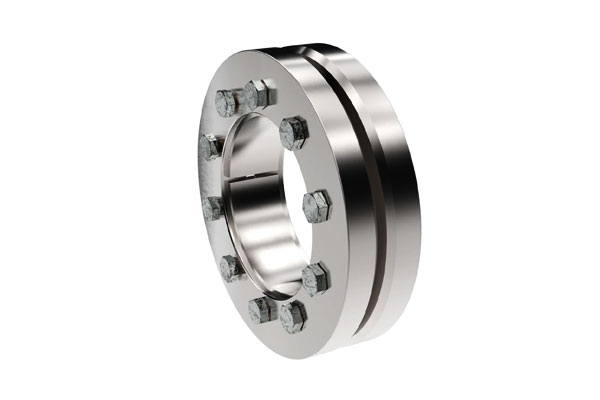
3. Хемијски састав 1.4122 нерђајући челик
Below is a clean, professional table showing the chemical composition ranges for 1.4122 (X39CrMo17-1) stainless steel together with a concise, engineering-focused description of the role each element plays in this alloy.
| Елемент | Домет (вт%) | Primary role(с) — concise |
| Ц (Угљеник) | 0.33–0.45 | Main hardening agent — increases martensite hardness and wear resistance; reduces toughness and weldability at high levels. |
| ЦР (Хром) | 16.5–17.5 | Provides corrosion passivity and contributes to hardenability and carbide formation. |
| Мо (Молибден) | 0.80–1.30 | Improves hardenability, strength and resistance to localized corrosion. |
| У (Никл) | ≤1.00 | Minor toughness aid; kept low to retain martensitic response. |
| Мн (Манган) | ≤1.50 | Deoxidizer and mild hardenability aid. |
И (Силицијум) |
≤1.00 | Deoxidizer and modest solid-solution strengthener. |
| П (Фосфор) | ≤0.04 | Impurity — kept low to avoid embrittlement and fatigue loss. |
| С (Сумпорни) | ≤0.015 | Minimized (not a free-machining grade) because it lowers toughness and fatigue performance. |
| Фе (Iron) | Равнотежа | Matrix element — forms the martensitic steel base. |
| Trace elements (Од, У, Цу, Н, итд.) | обично <0.05-0.20 | Small micro-alloying effects or tramp elements; can refine grain or slightly modify properties when present. |
4. Механичка својства 1.4122 нерђајући челик
Mechanical properties vary with heat treatment state. Below are representative ranges used for design guidance.
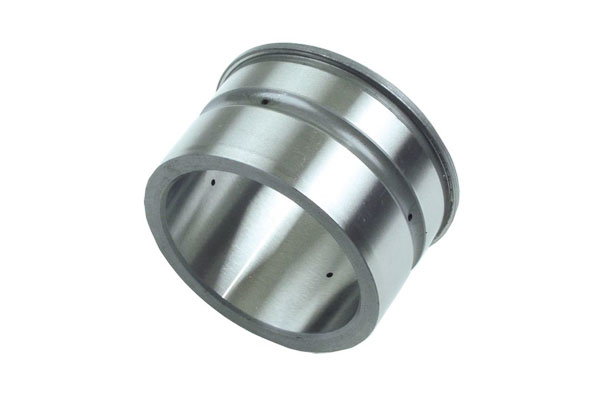
| Услов / treatment | Тврдоћа (ХРЦ) | Затезна чврстоћа (Утс, МПА) | 0.2% Proof / Принос (МПА) | Издужење (А, %) | Цхарпи В-Бетцх (цца., Ј) |
| Мекан / нормализован (достава) | ~20–30 HRC | ~500–700 MPa | ~300–450 MPa | 10-18 % | 30–60 J |
| Угашен & tempered → ~40 HRC (typical engineering temper) | ≈38–42 HRC | ~800–950 MPa | ~600–800 MPa | 8-12 % | 15-30 ј |
| Угашен & tempered → ~48–52 HRC (велика тврдоћа) | ≈48–52 HRC | ~1,000–1,300 MPa | ~800–1,100 MPa | 3-8 % | 5-20 ј |
| Maximum hardening (у близини 55+ ХРЦ) | >55 ХРЦ | >1,300 МПА | високо (approaching UTS) | низак (<3 %)* | низак (<10 Ј) |
5. Magnetic and Physical Properties of 1.4122 нерђајући челик
Understanding the magnetic and physical properties of 1.4122 stainless steel is critical for design engineers, particularly when specifying components for precision machinery, алат за алате, or applications where thermal expansion and conductivity matter.
| Имовина | Типична вредност | Инжењеринг импликација |
| Густина | 7.75–7.80 g/cm³ | Weight calculations, dynamic load, Дизајн компонената |
| Топлотна проводљивост | 19-24 в / м · к | Heat dissipation, machining and thermal distortion |
| Коефицијент топлотне експанзије | 10–11 ×10⁻⁶ /K | Dimensional stability under thermal cycles |
| Специфична топлота | ~ 460 ј / кг · к | Thermal management during processing |
| Магнетно понашање | Ферромагнетски | Consider in sensor proximity, electronic interference, magnetic assembly |
6. Отпорност на корозију
1.4122 stainless steel provides Умерено отпорност на корозију, superior to plain carbon steels but inferior to austenitic stainless steels.
Environments where it performs acceptably
- Fresh water and mildly oxidizing industrial atmospheres
- Organic acids and mild chemical environments, when polished or passivated
Ограничења
- Not recommended for окружења богата хлоридом (морска вода, расила) where pitting and crevice corrosion become significant.
- Localized corrosion resistance decreases with increasing hardness and tempering that expose microstructural heterogeneities.
Surface finishing and passivation
- Полирање to a fine finish and хемијска пасивација (Нпр., nitric acid treatment) improve corrosion performance by strengthening the passive film.
- Превлаке (боје, овлашћење) or cathodic protection are common for long service life in marginal environments.
7. Heat Treatment and Hardening
Топлотни третман tailoring is central to using 1.4122 ефикасно.
Typical hardening schedule
- Који се заварава: heat to roughly 980–1020 °C (typical range for martensitic stainless steels; exact temperature depends on section size and furnace control) to form austenite.
- Гашење: rapid cooling in oil or polymer quench to transform to martensite. Water quenching may be used but increases risk of distortion and cracking.
- Ублажавање: reheat to 150-600 ° Ц depending on required final hardness/toughness balance.
Lower temper temperatures yield higher hardness and lower toughness; higher temp yields lower hardness but better ductility and impact resistance.
Hardening response
- Carbide-forming elements (ЦР, Мо) and carbon content drive hardenability. 1.4122 exhibits good response allowing designers to select temper cycles for specific mechanical targets.
Ефекти
- Strength increases dramatically after quench and temper.
- Жилавост can be restored partially by tempering; there is a well-known tradeoff between hardness and toughness.
- Обрада generally worsens after hardening; most machining is done in annealed or partially tempered conditions.
8. Machinability and Fabrication
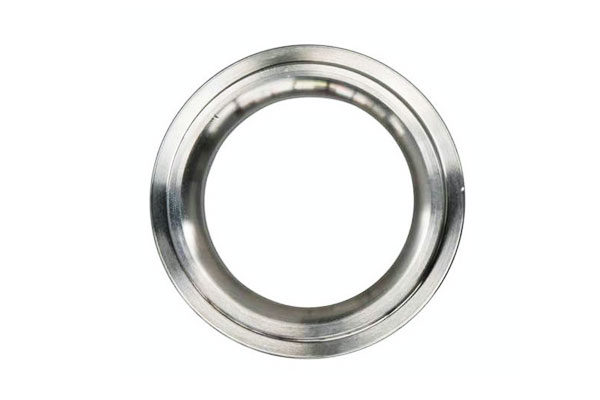
Обрада
- Medium in annealed condition. In soft condition, 1.4122 machines comparable to other martensitic grades with appropriate tooling and cutting speeds.
Use sharp high-speed tooling, adequate coolant and conservative feeds when machining hardened portions. - Poor when hardened. Тврдоћа >45 HRC substantially increases tool wear; grinding and carbide tooling are typical.
Завабилност
- Ограничен. High carbon and martensitic structure make the steel susceptible to hydrogen-induced cold cracking. Welding generally requires:
-
- Загрејати (Нпр., 150–250 °C depending on thickness)
- Low hydrogen electrodes
- Post-weld tempering or PWHT to relieve residual stresses and soften the HAZ
- For critical parts, welding is avoided or performed with post-weld heat treatment.
Формирање
- Хладно формирање: limited in hardened state; better to form in annealed condition and then harden.
- Топло формирање: may be used within controlled windows but requires subsequent heat treatment to restore designed properties.
9. Предности и ограничења
Предности 1.4122 нерђајући челик
- Добре оправданост: can be heat treated to a wide range of hardness and strength values.
- Balanced corrosion resistance: superior to carbon steels in many environments.
- Отпорност на хабање: suitable for cutting edges, shafts and lightly loaded wear parts.
- Магнетни: useful where ferromagnetic behaviour is needed.
Ограничења 1.4122 нерђајући челик
- Weldability limitations — requires preheat and PWHT for critical joins.
- Cold formability: poor in hardened state; must be formed in annealed condition.
- Corrosion limits: not recommended for seawater or high chloride environments without protective measures.
- Machining when hardened: high tool wear, special tooling required.
10. Индустријске апликације 1.4122 нерђајући челик
1.4122 is used where a combination of high surface hardness, отпорност на хабање, и умерено отпорност на корозију су потребни:
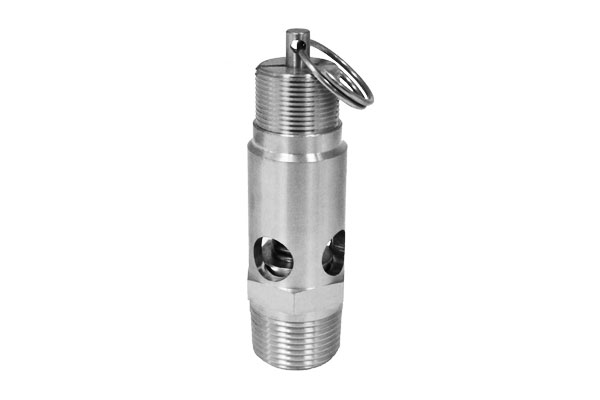
- Cutlery and surgical tools: ножеви, scissors and razors benefit from the balance of hardness and stainless behaviour.
- Mechanical engineering: шахтови, вретено, pins and small gears that require precision, edge retention and good wear lifetime.
- Pumps and valves: стабљике, seats and components exposed to fresh water or buffered fluids.
- Tooling and molds: for polymer processing and light tooling duties where corrosion resistance is helpful compared with plain tool steels.
- Other niche uses: носећи трке, small structural components, and certain fasteners where hardness and magnetic response are advantageous.
11. Comparison with Related Stainless Steels
1.4122 (X39CrMo17-1) је а martensitic chromium stainless steel with balanced hardness, отпорност на корозију, and wear properties.
To guide material selection, it is helpful to compare it with other commonly used martensitic and chromium stainless steels, укључујући 1.4034 (X46Cr13) и 1.4112 (X90CrMoV18).
| Имовина / Легура | 1.4122 (X39CrMo17-1) | 1.4034 (X46Cr13) | 1.4112 (X90CrMoV18) | Engineering Notes |
| Угљеник (Ц) | 0.36–0.44% | 0.42–0.50% | 0.85–0.95% | Carbon controls hardness and wear resistance; higher C increases hardness but reduces ductility. |
| Хром (ЦР) | 16-18% | 16-18% | 16-18% | Chromium provides corrosion resistance; all three are martensitic grades with moderate corrosion resistance. |
| Молибден (Мо) | 0.8-1,2% | 0–0.2% | 0.8-1,2% | Mo improves pitting and general corrosion resistance, посебно у 1.4122 и 1.4112. |
| Ванадијум (У) | Траг | Траг | 0.1-0,3% | V increases hardness and wear resistance, коришћен у 1.4112 for high-wear tools. |
| Затезна чврстоћа (МПА) | 800-1100 (угашен & каљено) | 700-1000 | 1000-1400 | 1.4112 is a high-carbon grade designed for maximum wear; 1.4122 balances strength and toughness. |
Тврдоћа (ХРЦ) |
50-55 | 48–52 | 56-60 | 1.4112 achieves higher hardness due to higher carbon; 1.4122 suitable for tooling and shafts. |
| Отпорност на корозију | Умерен | Умерен | Умерен до ниског | 1.4122’s Mo addition improves resistance to mild oxidizing environments over 1.4034. |
| Обрада | Умерен | Добри | Сиромашан | Високо угљеник 1.4112 is more difficult to machine; 1.4122 balances machinability with hardness. |
| Типичне апликације | Прибор за јело, алат за алате, Осовине пумпе, вентили | Прибор за јело, Хируршки инструменти, механички делови | High-wear tools, ножеви, industrial blades | Selection depends on required hardness, отпорност на корозију, and machining constraints. |
12. Закључак
1.4122 (X39CrMo17-1) is a practical martensitic stainless steel that provides a versatile combination of тврдоћа, wear resistance and moderate corrosion resistance.
Its capability to be tailored through heat treatment makes it a go-to choice for cutlery, шахтови, valve parts and tooling applications where a compromise between stainless behaviour and high hardness is required.
Често постављана питања
What is the typical hardness range achievable for 1.4122 нерђајући челик?
In delivery/softened condition about 27–33 HRC. After quench and temper the alloy can be adjusted typically to ~40–55 HRC depending on tempering temperature and section size.
Јесте 1.4122 stainless steel suitable for seawater service?
No — it has only moderate chloride resistance. For seawater or highly corrosive environments, select duplex or austenitic stainless steels with superior pitting resistance.
Can I weld 1.4122 Компоненте од нехрђајућег челика?
Welding is possible but challenging. Use preheat, low-hydrogen consumables and post-weld tempering to avoid cracking and restore toughness.
How does heat treatment affect toughness?
Tempering at higher temperatures improves toughness but reduces hardness. Select tempering temperature to achieve the required balance for fatigue and impact loads.
Зависно од апликације, 1.4034 may be an economical substitute for lower performance needs; 1.4112 or other high-C martensitics may be used where extreme hardness is required but note differences in corrosion and toughness.
